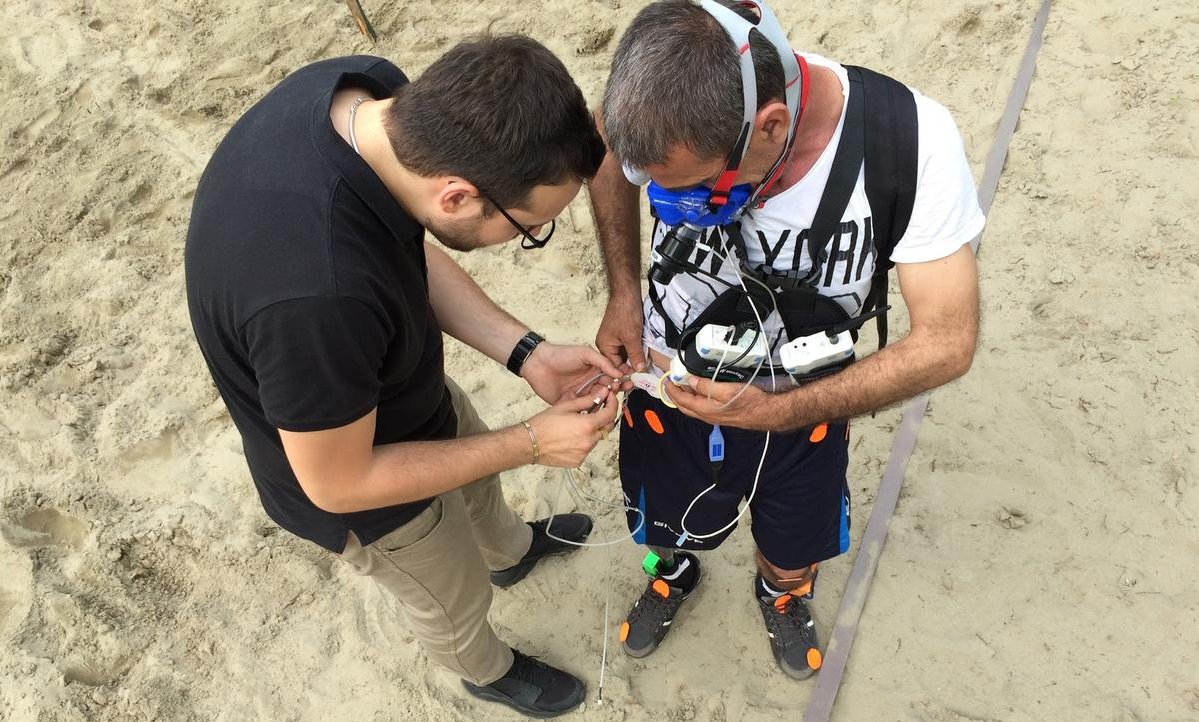
Two volunteers are the first above-knee amputees in the world to feel their prosthetic foot and knee in real time. Their bionic prosthesis, which was developed by an international team of researchers, features sensors that connect to residual nerves in the thigh. The resulting neurofeedback greatly reduces physical and mental strain for users of the prosthesis.
Up until now people using a leg prosthesis did not get a feedback from the prosthesis. They often cannot trust their prosthesis completely when walking, leading them to rely too often on their intact leg, which in turn reduces their mobility and causes them to tire quickly. Furthermore, people with amputations can experience phantom limb pain, a condition that existing medications often cannot treat.
An international team of researchers led by ETH Zurich and Lausanne-based start-up company SensArs has now developed an interface to connect a leg prosthesis with the residual nerves present in the user’s thigh, thus providing sensory feedback. In a study conducted in collaboration with the University of Belgrade, the scientists tested this neurofeedback system with two volunteers who have an above-knee leg amputation and use a leg prosthesis.
The solution benefited the amputees in a variety of ways, as the researchers reported in the latest issue of the journal Nature Medicine. “This proof-of-concept study shows how beneficial it is to the health of leg amputees to have a prosthesis that works with neural implants to restore sensory feedback,” says Stanisa Raspopovic, a Professor at the Institute of Robotics and Intelligent Systems at ETH Zurich. The two patients were able to walk faster, needed less effort and the phantom limb pain was clearly reduced.
The scientists view these outcomes optimistically. However, they point out the need for a longer investigation with in-home assessments and a greater number of volunteers, in order to provide more robust data that they can use to draw more significant conclusions.
For the time-limited clinical study, the signals from the prosthesis were sent along cables through the skin to the electrodes in the thigh. This meant that the volunteers had to undergo regular medical examinations. To eliminate this need, the scientists intend to develop a fully implantable system. “At SensArs, we’re planning to develop a wireless neurostimulation device that can be fully implanted into the patient like a pacemaker, and that can be brought to the market,” says Francesco Petrini, CEO of SensArs.
More information on the website of ETH Zurich.
(Press release)
Picture: Metabolic Preparation: Researcher Giacomo Valle and volunteer Savo Panic. © Federica Barberi























































Please login or sign up to comment.
Commenting guidelines